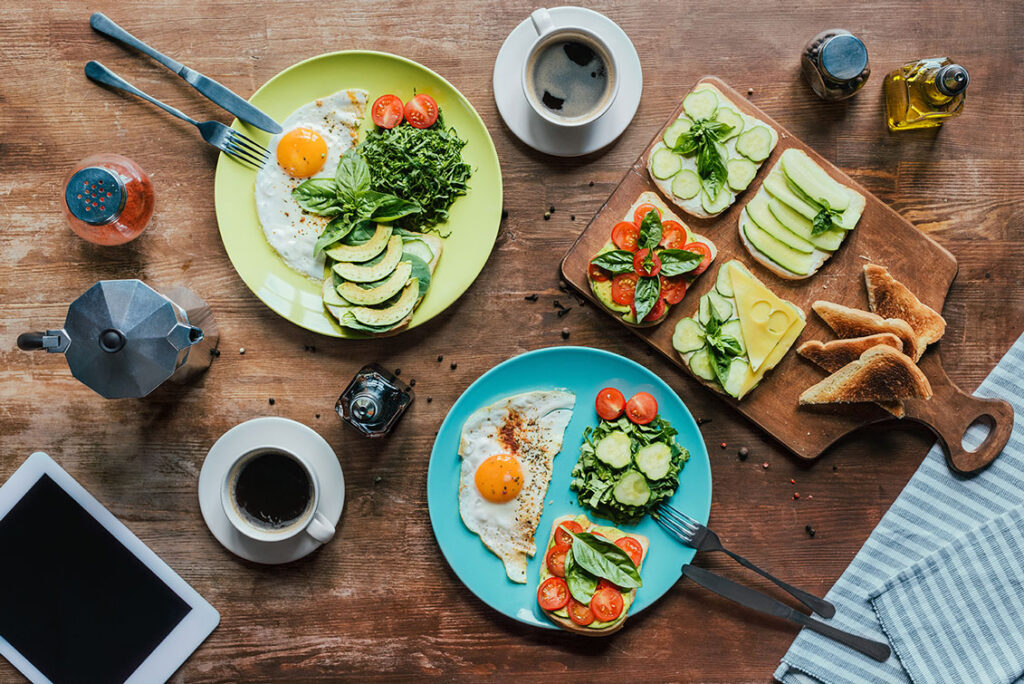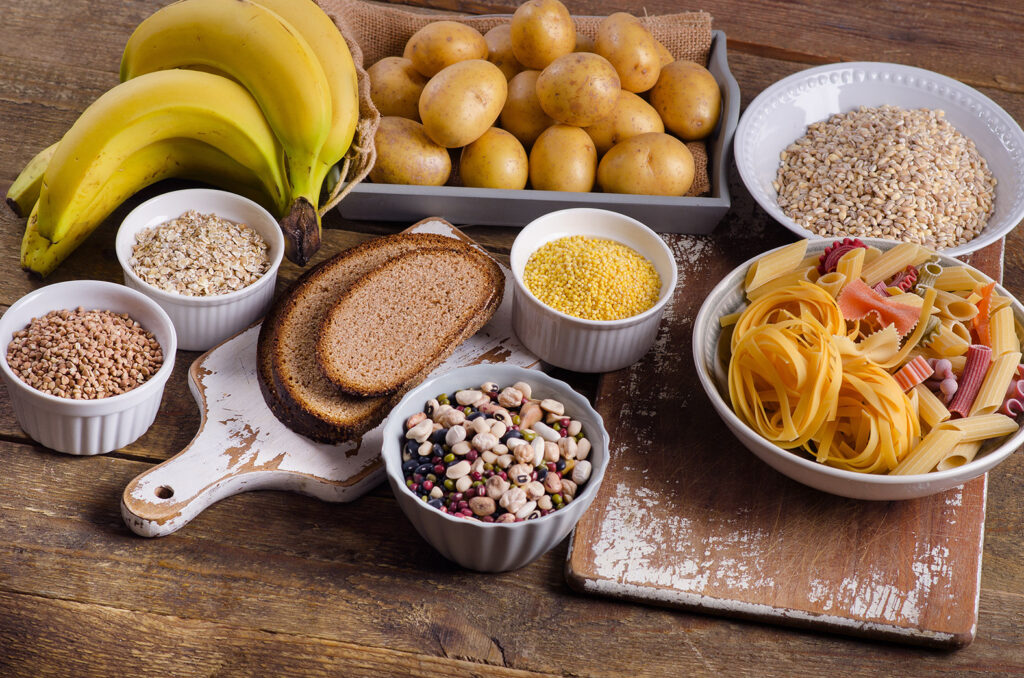If you have diabetes, a meal plan can help to guide you on when, what, and how much to eat, while taking into consideration your goals, preferences, and lifestyles, as well as any medication you’re taking. A good meal plan will:
- keep your blood glucose level, blood pressure, and cholesterol within normal ranges
- help you lose weight or stay at a healthy weight
- prevent or delay diabetes-related complications
- ensure you consume a variety of foods to meet your nutritional needs.
What are Some Ways to Plan Your Meals?

1. The Plate Concept
The simple and visual way to create perfectly portioned meals; to make sure you get enough non-starchy vegetables (e.g. kailan, spinach, broccoli, green beans etc) and lean protein while moderating the amount of carbohydrate foods you eat.
Simply fill:
- Half of your plate with non-starchy vegetables
- One-quarter of your plate with lean protein
- One-quarter of your plate with carbohydrate foods such as whole grains (e.g. brown rice, wholegrain noodles, wholemeal bread), or potatoes, or starchy vegetables (e.g. corn, pumpkin, sweet potatoes, and yam)
- Complete your meal with one serving of fruit
- Choose water or a low-calorie drink such as unsweetened iced tea to go with your meal

2. Carbohydrate Counting Method
Foods with a similar amount of carbohydrate per serving size can be “exchanged” interchangeably during meal planning, so that you will end up having about the same amount of carbohydrate in your meals.
Average 15g carbohydrate = One carbohydrate exchange. This is equal to:
- 1 slice of wholemeal bread (30g)
- 3 tbsp of brown rice (50g)
- 1/3 bowl of noodles (65g)
- 3 tbsp of instant dry oats (20g)
- 3 pieces of wholemeal plain crackers (15g)
- ½ piece of chapatti (25g)
- 1 large cooked potato (70g)
- ½ medium sweet potato (60g)
- 1 small banana (60g)
- 1 small apple (135g)
- 1 slice papaya (150g)
- 1 cup low-fat plain milk (250ml)
Try to eat about the same amount of carbs at each meal to keep your blood sugar levels steady throughout the day.
How Much Carbohydrate Should I Be Eating?
The amount of carbohydrate you need each day depends on your age, weight, activity level, and other factors. It is best to approach a doctor or dietitian to help you create a meal plan that caters to your unique needs and lifestyle.
While there’s no single plan that will suit everyone, here’s an example of how to portion and distribute your carbohydrate-intake throughout the day, based on an 1800-calorie diet:
|
BREAKFAST |
Carbohydrate Exchanges |
|---|---|
|
Egg sandwich (with 2 slices of wholemeal bread) |
3 |
|
1 cup of unsweetened coffee / tea with low-fat milk |
|
|
LUNCH |
|
|
1 bowl (200g) brown rice with a palm-size of fish and, ¾ cup cooked leafy vegetables |
4 |
|
1 serving of fruit |
1 |
|
AFTERNOON SNACK |
|
|
Wholemeal biscuit |
2 |
|
1 glass of unsweetened / reduced sugar soymilk |
|
|
DINNER |
|
|
1 wholemeal hamburger bun with roast chicken, and potato and vegetable salad (1 medium potato, 4 tbsp corn kernels, tomatoes, cucumbers and raw leafy vegetables of your choice) |
4 |
|
1 serving of fruit |
1 |
References:
- https://www.nup.com.sg/Documents/Brochure/Carbohydrate%20Counting.pdf
- https://www.cdc.gov/diabetes/managing/eat-well/meal-plan-method.html
- https://diabetes.org/food-nutrition/meal-planning

